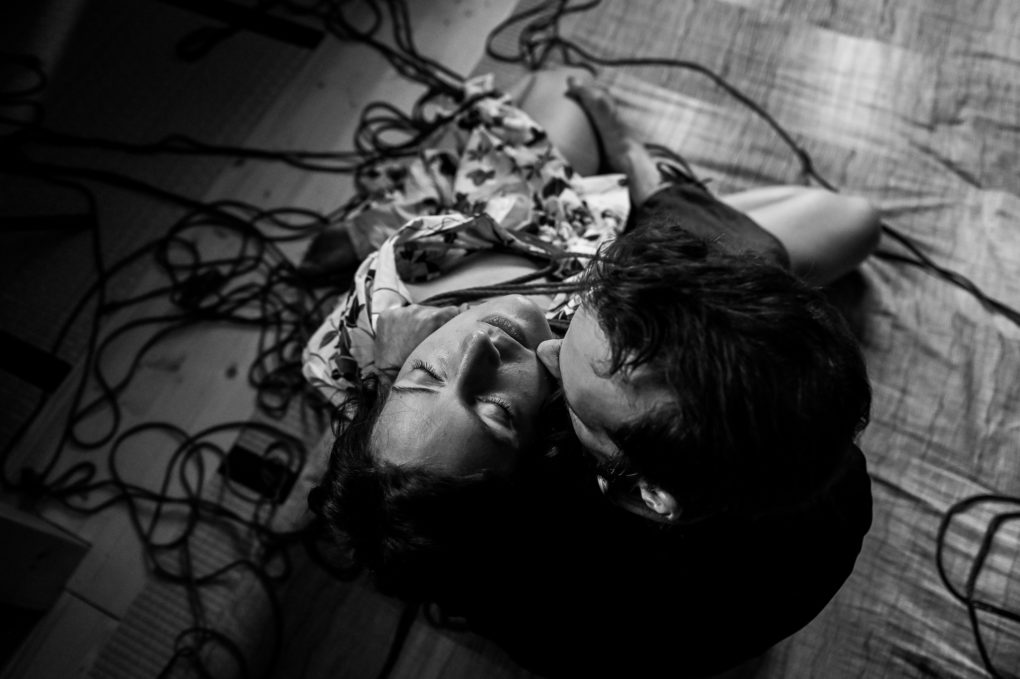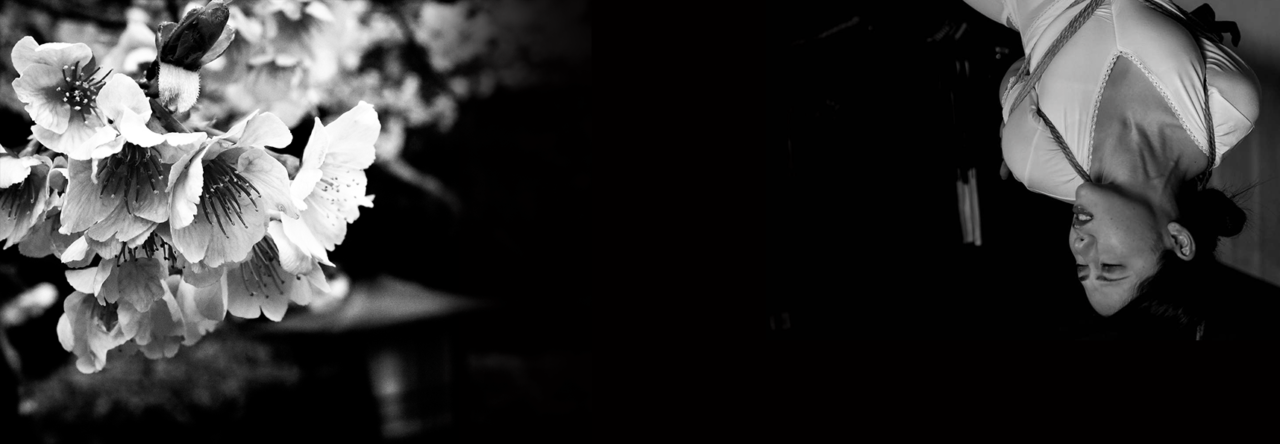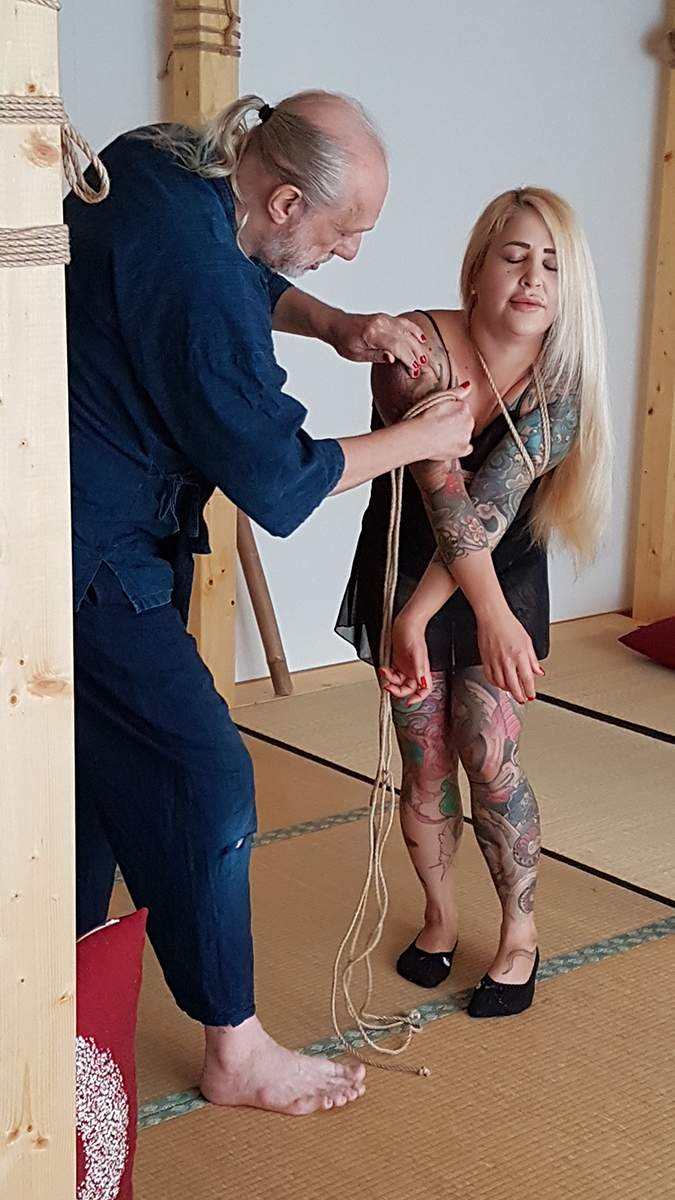Aibunawa (愛撫縄) means “caressing rope”. It is the opposite term to Semenawa and is one of the core concepts in Yukimury-Ryû. It describes the way the rope is used, namely tenderly and carefully. The goal is to reduce pain and unpleasant sensations as much as possible.
It is about gentle stimuli and subtle interactions, so that a harmonious togetherness unfolds between Bakushi and Ukete. It is about loving and gentle interaction that helps bring out sensuality and deep emotions. This way of doing shibari is the trademark of Yukimura Haruki.
To me, shibari is an emotional exchange between a man and a woman. That´s unique to Japan – to express love and emotion entirely through the medium of rope. So Shibari is not how you do this tie or that tie, it’s how you use the rope to exchange emotions with another.
Yukimura Haruki
It can be significantly more difficult to do Aibunawa than Semenawa. Semenawa requires clear guidance, and Ukete knows what is expected. The physical challenge of it already generates a lot of tension and intensity and helps to get into the right mental mindset.

Aibunawa, however, leaves more space and demands more cooperation. Depending on the the preferences of Bakushi and Ukete, it can be advisable to focus on Aibunawa or Semenawa.
Ambivalence as Style Element
Aibunawa generally requires less rope and is tied more loosely than Semenawa. This allows the illusion that escape from the rope is still possible, while, however, the subtle skills of Bakushi always lead Ukete further. The hierarchy is hidden, not suspended or undermined, and the more Ukete understands how inescapable the situation is, the more intense the experience becomes.
Aibunawa thus has an ambivalent meaning and deliberately plays with this ambiguity.




